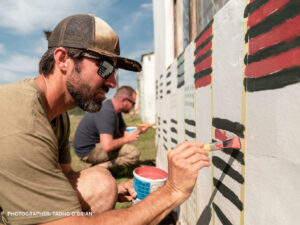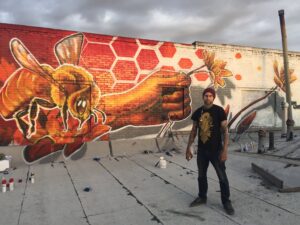A special thank you to Hannah Hendrickson, Director of Golf Programs at Kansas Wesleyan University, for challenging us to consider how lessons learned in golf may help address vulnerabilities in the Zoo & Aquarium industry exposed by the COVID-19 pandemic.
Practical Application: Consider a demographic you know is missing from or underrepresented in your organization. What exclusionary practices or barriers may be in place preventing this demographic from engaging with your organization? Is there a local group or individual from within this community that may offer insight into how your organization could better include or serve their demographic? Reach out and schedule a time to hear their ideas.
5 Key Points
Crisis Drives Change and Collaboration
Akin to the Association of Zoos and Aquariums, golf’s major international organizations and professional tours – the European Tour, LPGA, Masters Tournament, PGA of America, PGA TOUR, The R&A and the USGA – band together as the World Golf Foundation with a mission to unite the golf industry around initiatives that promote, enhance the growth of and provide access to the game worldwide, while preserving golf’s traditional values and passing them on to others. When nearly 35,000 golf courses closed in just four years (2009 – 2013) the WGA was compelled to lead the industry in a deep demographics analysis and development of strategic, data driven initiatives. Previously localized and at a grassroots level, the WGA’s leadership of industry-wide initiatives brought greater public attention, professional buy-in and maximized rates of return. What opportunities exist for AZA facilities to unite around data driven initiatives with clear outcomes to address the vulnerabilities in the Zoo & Aquarium industry exposed by the COVID-19 pandemic?
Identify Barriers & Apply Strategic Levers
Once the WGA identified missing and underrepresented audiences, further analysis of the data revealed barriers to participation and exclusionary practices. Surveys found that a lack of knowledge and fear of embarrassment was preventing many new players from trying the sport, leading to new programs such as First Tee for juniors and Get Golf Ready for women. Beyond this, exclusionary practices such as no juniors or women before 10:00 am on Saturdays were examined, and often eliminated, to create a more welcoming environment. Fees and membership structures were assessed and adjusted to attract players under the age of 35. What barriers to participation or exclusionary practices would an analysis of missing and underrepresented audiences at your Zoo or Aquarium reveal, and what strategic levers could you apply to increase accessibility and participation?
Diverse Representation Matters
When Tiger Woods participated in his first PGA Tour major in 1995 at only 19, he changed public perception of golf. A new generation was paying attention to the sport, inspired by his youth, style, and ethnicity. In his footsteps, and arguably correlated with the Word Golf Association’s strategic initiatives, followed a “cast of characters” with diverse backgrounds, styles, social media presences, and personalities. This diversity has brought new audiences to golf, as fans of varied generations and backgrounds find professional players more relatable and inspirational. In Zoos and Aquariums, diversity in role models – conservationists, zookeepers, educators, senior level leadership – can have the same effect, bringing new audiences of staff, guests and members who can see themselves as a part of our organizations and conservation programs.
Re-Frame Industry Competitors
At first glance, experiences like TopGolf, miniature golf, and driving ranges may seem like competition to traditional golf courses. However, these experiences are perceived by the WGA as accessible, entry-level opportunities to introduce new audiences to the sport. Not everyone will commit to a full 9 or 18 holes of golf, but many are willing to try a driving range, Putt Putt, or virtual golf experience at a bar. If they like it, they may be willing to take the next step toward becoming a golfer. What does it mean for a Zoo or Aquarium if a visitor’s first animal experience is at a farm, animal sanctuary, nature center, private traveling animal show, circus, or non-accredited zoo or aquarium? Or if a new applicant’s first job experience was at one of these places? Are there ways to take advantage of these introductory animal experiences to further our missions?
Golf Courses in Conservation
Most view golf courses as perfectly manicured, almost artificial, swaths of grass requiring constant maintenance, pesticide application, wildlife management, and watering. While much of this is true, approximately 70 percent of most golf course acreage is managed for “rough”, or out-of-play areas. Scott Shoemaker of the Sunset Zoo pointed out that Colbert Hills Golf Course in Manhattan, KS is partnering with the National Wildlife Foundation to create prairie areas on their course and Mike Kreger noted that Safari Golf at the Columbus Zoo is an Audubon Cooperative Sanctuary. The United States Golf Association partners with Audubon International in “Monarchs In The Rough”, an initiative that as of July 2020 has inspired over 700 golf properties to commit 1,020 acres to milkweed plants for monarch butterflies. Can golf courses be conservation partners? Are there features of our Zoos and Aquariums that can be reimagined in a similar way?




